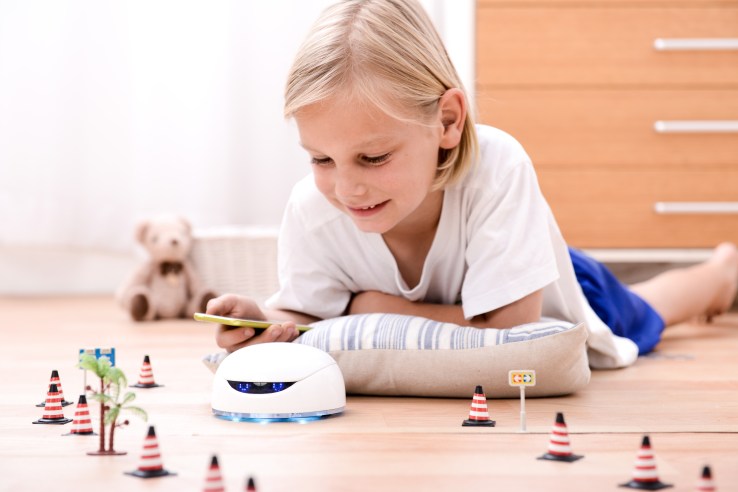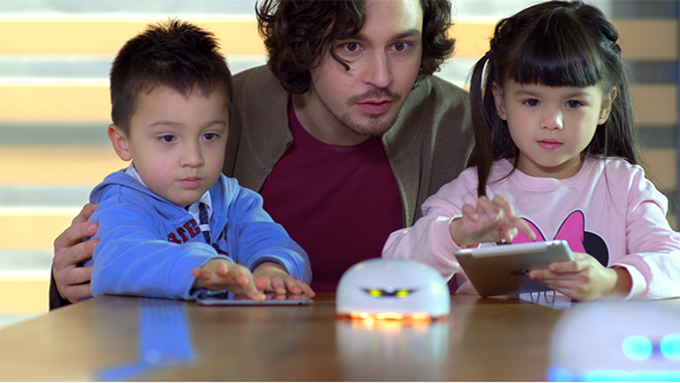Balloons according to
their formal definition are bags filled with some sort of gas or air. It may
look as a toy for kids or a decorative item but it is also used for many other
purposes. A common scientific use of balloons is in predicting the weather.
Weather forecasting is done using balloons carrying equipment which gathers
information such as humidity, wind speed, atmospheric pressure etc. Weather
balloons communicate with radio equipment attached to the ground at radio
frequencies of 403 to 1680 MHz .
To the layman the internet is a online global community of people but it isn’t exactly global since a major portion of
the world’s population still are not a part of the internet community due to
the lack of internet access. Project Loon looks forward to making the internet
community truly global through its network of balloons travelling through the
skies. They intend to connect the remote and rural areas which are disconnected
from the rest of the world. One may think If all this is actually possible but
with Google funding and backing the project it might soon achieve its goal.
It is odd for a large public company to build out infrastructure aimed at helping the world’s poorest people. But in addition to Google’s professed desires to help the world, the economics of ad-supported Web businesses give the company other reasons to think big. It’s hard to find new customers in Internet markets such as the United States. Getting billions more people online would provide a valuable new supply of eyeballs and personal data for ad targeting. That’s one reason Project Loon will have competition: in 2014 Facebook bought a company that makes solar-powered drones so it can start its own airborne Internet project.
Birth Of Loon: Project Loon was officially unveiled by
Google in June 2013 in the country of New Zealand. The main mission behind the
idea of such a project was to provide internet access to the residents of
remote and rural areas. 2011 had already witnessed the unofficial development
of Project Loon in Google X labs, the R&D facility of Google, following
which a series of trial runs were run in California’s Central Valley and by
June 14 2013 the project was officially announced. A Brazilian farmer had the
honour’s of launching the first Loon balloon.
TECHNOLOGY:
The loon is comprised
of three parts: an envelope, solar panels and equipment. Project Loon’s balloon
envelopes, inflatable part of the balloon, are made from sheets of
polyethylene. They are specially constructed for use in Super pressure
balloons, which are resistant to UV radiation, and is capable to function at
temperature as low as -58 °F, and at pressure as low as 1/100 atm. Balloons
filled with Helium and air mixture are launched, recycled and relaunched at a
designated collecting point. After 100 days from the launching, the balloon is
ready to be taken out of service and the gas is released from the envelope to
bring down the balloon in a controlled descent to the ground. Each balloon
includes a parachute to ensure a more controlled landing. The balloons and equipment
on board can be re-used and each loon has an approximately 2-years life time.
Solar panels power each unit’s electronics. In full sun, these panels produce
100 watts to keep the unit running while also charging a battery for use at
night. By moving with the wind and charging in the sun, the Loon is able to
power itself using only renewable energy sources.2 A small box containing the
balloon’s electronic equipment hangs underneath the inflated envelope, which
contains circuit boards that control the system, radio antennas to communicate
with other balloons and with Internet antennas on the ground, batteries to
store solar power so the balloons can operate during the night, and weather
instruments to monitor the weather and the conditions around them.

Loons Movements: Project Loon balloons
travel around 65,000 feet above the Earth’s surface in the stratosphere. Winds
in the stratosphere are generally steady and slow-moving at between 5 and 20
mph, and each layer of wind varies in direction and magnitude. Due to the wind
properties, balloons can travel along latitude line with a ± 5o latitude range.
Project Loon uses software algorithms to determine where its balloons need to
go, then moves each one into a layer of wind blowing in the right direction. By
moving with the wind, the balloons can be arranged to form one large
communications network. The Loon team can access the web-based control system
from any computer or tablet.
Loons Connections: Far below the loons, ground stations providing
connectivity to backbone Internet can transmit signals to the balloons up to 65
miles far. The signals would hop forward, from one balloon to the next, along a
chain of up to 5 balloons. Each balloon is networked to one another within 30
miles with a radio transceiver as in a mesh, designed to ensure signal
reliability. A second transceiver keeps the balloon in contact hundreds of
antennas on ground area about 25 miles in diameter at speeds comparable to 3G.
The specialized antennas can be placed on homes, much like a very small
satellite TV receiver. Project Loon currently uses ISM bands (specifically 2.4
and 5.8 GHz bands) that are available for anyone to use. There is also a
back-up transceiver and a GPS on each balloon, so Google can monitor each
balloon's location.
Each of the balloons of Project Loon can
provide connectivity to a ground area of about 40km in diameter at speeds
comparable to that of 3G connectivity. Project Loon balloons float in the
stratosphere, twice as high as the airspace of airplanes and weather balloons.
These Balloons travel around the Earth using the wind and can reach many places
by rising or descending to a particular altitude with winds moving in the
desired direction. For balloon-to-balloon and balloon-to-ground communications,
the balloon use antennas equipped with specialized radio frequency technology.
Project Loon currently uses ISM bands 2.4 and 5.8 GHz to be specific, these are
the bands that are available for anyone to use.
Unlike the normal weather
balloons, the balloons of Project Loon are super pressure balloons designed to
stay up for up to 100 days at a stretch. By partnering with different Telecommunications
companies in different parts of the world they share the cellular spectrum and
enable people to connect to the balloon network directly from their phones and
other LTE-enabled devices. The signal is then passed across the balloon network
and then to the global Internet back on Earth.
The balloons are maneuvered by adjusting their altitude to float to a
wind layer after identifying the wind layer with the desired speed and desired
direction using wind data from the National Oceanic and Atmospheric
Administration (NOAA).In the year 2008, Google had considered or had plans of
contracting with or acquiring Space Data Corp., a company that sends balloons
carrying small base stations about 32 km up in the air for providing
connectivity to truckers and oil companies in the southern part of the United
States, but the plan didn’t work out and they didn’t do so.
The helium balloons are inflated to the size they reach in the stratosphere. The “ballonets” inside are filled with air or emptied to make the balloon fall or rise. The 15-kilogram box carried by a Loon balloon has computers that act on commands from flight engineers, as well as equipment to transmit Internet connectivity to the ground below.
Google
has also made many improvements to the design of the Loon balloons’ payloads
and electronics. But it still has problems left to solve. For example, Google
needs to perfect a way of making radio or laser connections between balloons,
so that they can pass data along in an aerial chain to connect areas far from any
ground station.
“HARMLESS SCIENCE EXPERIMENT.” That’s what was written on the boxes carried by the balloons that the secretive Google X lab began to launch over California’s Central Valley in 2012, along with a phone number and the promise of a reward for safe return. Inside the boxes was a modified office Wi-Fi router.
Loon’s leaders planned to buy their own space on the radio spectrum so their balloons could operate independently of existing wireless networks. But Google CEO Larry Page nixed that idea and said the balloons should instead be leased to wireless carriers, who could use the chunks of the airwaves they already own and put up ground antennas to link the balloons into their networks. That saved Google from spending billions on spectrum licenses and turned potential competitors into allies.
Google has also made major improvements to its stratospheric craft. One of the most significant improvements was developing a way to accurately pilot balloons across thousands of miles without any form of propulsion. The stratosphere, which typically is used only by weather balloons and spy planes, is safely above clouds, storms, and commercial flights. But it has strong winds, sometimes exceeding 300 kilometres per hour. Providing reliable wireless service means being able to guarantee that there will always be a balloon within 40 kilometres.
Google solved that aviation problem by turning it into a computer problem. Winds blow in different directions and at different speeds in different layers of the stratosphere. Loon balloons exploit that by changing altitude. As a smaller balloon inside the main one inflates or deflates, they can rise or fall to seek out the winds that will send them where Google wants them to go. It’s all directed by software in a Google data centre that incorporates wind forecasts from the U.S. National Oceanic and Atmospheric Administration into a simulation of stratospheric airflow. “The idea is to find a way through the maze of the winds,” says Johan Mathe, a software engineer working on Loon’s navigation system. A fleet of balloons can be coordinated that way to ensure there is always one over any particular area.
Google has also had to figure out how to make the balloons sturdier, so they can spend more time in the stratosphere. The longer they stay up, the lower the cost of operating the network. However, weight considerations mean a balloon’s envelope must be delicate. Made from polyethylene plastic with the feel of a heavy-weight trash bag, the material is easily pierced with a fingertip, and a stray grain of grit in the factory can make a pinprick-size hole that will bring a balloon back to earth after less than two weeks.




